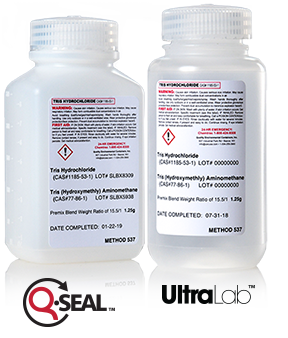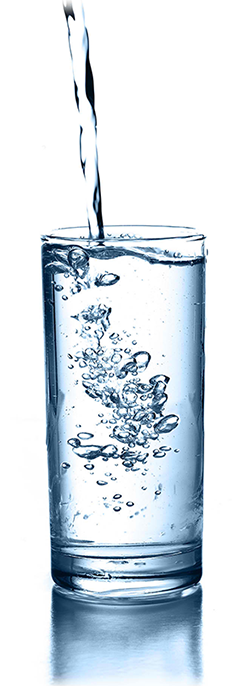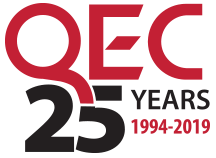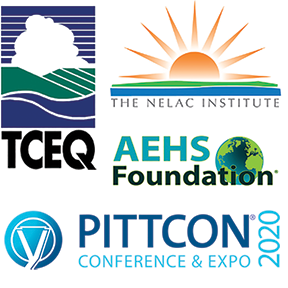

Left: Q-Seal™ 250mL HDPE oblong, preserved,
with mated polypropylene closure
Right: UltraLab™ 250mL Polypropylene
wide-mouth round, preserved,
with
mated
polypropylene closure
Per- and poly-fluoroalkyl substances (PFAS) have been identified as a public health concern, primarily from contaminated drinking water. Studies of the extensive presence of PFAS in the environment have also brought about a need to analyze samples from a range of other environmental media.
EPA Method 537.1 is the approved testing method for PFAS detection; but only for drinking water, and then only for detecting 18 of the hundreds of PFAS compounds known to exist. Laboratories often use a modified version of EPA 537 (aka 537M) and other methods (ASTM D7968-14, ASTM D7979-15) to test for a broader range of PFAS compounds, and in media other than drinking water, such as soil, sludge, groundwater, wastewater, surface water, landfill leachate, and fish tissue. (Merit Laboratories has an excellent blog post comparing EPA 537.1, 537M and ASTM D7979 methods.)
Sampling requirements for PFAS can vary, depending on the analytical method to be used, the media sampled, and the analyte to be detected. Some methods and procedures require HDPE containers, while others allow for polypropylene. EPA Method 537.1 requires sampling containers to be preserved with a complex chemical mixture known as TRIZMA, although other methods (including modified versions of EPA 537) do not use any chemical preservative.
QEC has the right container and the right preparation for most of the PFAS sampling requirements you may encounter. Our Q-Seal™ HDPE and our UltraLab™ polypropylene containers are trusted by labs everywhere as reliable for PFAS sampling. Both are precision-engineered for leak-proof performance in the field and in the laboratory.
When sampling under EPA Method 537.1, you can be assured that our expert custom-preserving technicians have prepared your preservatives and preserved you containers to exact specifications.
Please contact our customer service team for more information on how QEC can support your PFAS sampling program.
Source material in this article was digested from:
https://www.limno.com/pfas-analysis-the-new-wild-west

The US Environmental Protection Agency (EPA) intends to propose a regulatory determination for PFOS and PFOA in 2019, and will include a larger group of PFAS in the Fifth Unregulated Contaminant Monitoring Rule (UCMR5), according to material published at asdwa.org, the website of the Association of State Drinking Water Administrators (ASDWA).
EPA’s PFAS Action Plan, published in February 2019, also calls for:
- Continuing the process to list PFOA and PFOS as CERCLA hazardous substances;
- Finalizing toxicity assessments for PFBS and GenX in 2019
- Drafting toxicity assessments for PFBA, PFHxA, PFHxS, PFNA, and PFDA in 2020
- Final regulatory determination in December 2019;
- Proposed drinking water standards in December 2021 (two years after final regulatory determination per the SDWA regulatory development process); and
- Final drinking water standards in June 2023 (18 months after proposal).
EPA could possibly somewhat speed up its regulatory development process if the Agency’s leadership makes that decision, according to ASDWA. However, there are still many reviews and procedures that have to be followed for the development of any national drinking water standard.
In a December 2018 letter to the EPA, ASDWA recommended that all PFAS compounds, as a group, should be included in the final Contaminant Candidate List for inclusion in UCMR5 (CCL5).
“Although perfluorooctanoic acid (PFOA) and perfluorooctane sulfonic acid (PFOS) were included on the final CCL4 and monitored (with four other PFAS) under the third Unregulated Contaminant Monitoring Rule (UCMR3), PFAS, as a group, should be included in the final CCL5 to provide a potential path for a holistic solution to this vexing environmental problem,” the letter stated.
ASDWA called for PFAS to be included in the final CCL5 as a group because there are literally thousands of potential drinking water contaminants in this group and “adding them one by one is not going to be constructive for the long-term.”
The ASDWA letter pointed out that including the group on the final CCL5 (in addition to individual PFAS that can be analyzed for currently) would help EPA maintain focus on these emerging contaminants together, at least initially, and begin to consider what regulatory actions may be appropriate.

QEC shipped its first products in March 1994, serving a handful of customers in a few states in the mid-Atlantic and Southeast USA.
Now, 25 years later, we are America’s largest independent supplier of environmental sampling containers and accessories, with customers in all 50 states and more than 20 countries and overseas territories, as well as a distribution partner in South Korea.
It is only because of our customers that QEC has reached this important milestone in its growth. As an independent company, our first and only duty is to the businesses and individuals who rely on our products. It shows in our quality and in our service.
Thanks to our customers and partners for a quarter century of glowing success.

Besides visiting clients and prospects throughout the USA, QEC attends a number of expos, conferences, and symposia throughout the year to exhibit our products and confer with attendees. Please contact our marketing department if you would like to schedule a meeting, either at one of these events or at your facility..
- TCEQ Environmental Trade Fair and Conference
May 14-15, 2019 • Austin, Texas
Staff attending: Greg Radford, Southwest Marketing Manager - NELAC Institute Environmental Measurement Symposium
August 5-9, 2019 • Jacksonville, Florida
Staff attending: Michael McCune, VP Sales and Marketing - 35th Annual International Conf. on Soils, Sediments, Water, and Energy
October 21-24, 2019 • Amherst, Massachusetts
Staff attending: Jim Wagner, Northeast Marketing Manager - Pittcon 2020
March 1-5, 2020 • Chicago, Illinois
Staff attending: (to be determined)
® 2019 Quality Environmental Containers, Inc. • info@qecusa.com